.
Herbs are often unremarkable to look at, but man, what would we do without their flavour? Can you imagine a tomato sauce without thyme, rosemary and basil? Or a roast without a bouquet garni? What about pesto and herb butter for a barbecue? Yet, herbs not only flatter our tongues but are also beneficiary to our health. Think of chamomile tea that we drink when we have an upset stomach.
Unfortunately, most herbs are only available during the summer months. Some aren’t even winterhardy. To use herbs all year round, we must find a way to preserve them. Drying is the most common method but there are many more. I’ll show you six great ways to preserve herbs.
When to harvest herbs
No matter what herb you want to use, the amount of essential oils must be high when harvested. There are some tips you might want to observe to make sure that you harvest your herbs at the best possible time:
- The best time of day to harvest herbs is the late morning. The dew has dried off and it’s not yet so hot that the essential oils evaporate.
- Most herbs are best harvested before they burst into bloom. Herbs like chive and mint, for example, lose taste as soon as they’re blooming.
- Cut your herbs at the stems where they are still green and haven’t lignified yet. That way, they can continue to grow and you can have a second (or even third) harvest.
Drying
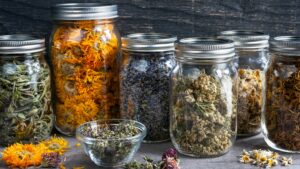
You can practically dry every herb. Just cut the stems off as described above. I know that many people tell you not to wash your herbs before drying them because that would enhance the risk of mildewing. But that’s only true if you don’t dry the herbs properly after washing or even bundling the stems together while they are still wet. I always wash my herbs before drying them because no matter where they grow, they’ll always be dirty or contain the occasional insect. After washing, shake the herbs, lay them on a clean towel and cover them with a second towel. Now, gently squeeze out the remaining water and move the herbs over to a third (dry!) towel where you let them pre-dry for a few hours.
To dry the herbs completely, you can either air-dry or oven-dry them or put them into a dehydrator. For more details on drying herbs, read this post.
Freezing
Some herbs are suitable for freezing. Depending on the herb you want to preserve that way, however, there are different methods.
Freezing chopped herbs
This is a great way to preserve herbs, especially parsley, chive, borage, chervil and great burnet. Chop the herbs, press them tightly into an airtight plastic container and put them into the freezer. When you want to add some frozen herbs to your soups or sauces, remove the amount you need with a spoon or a fork and put the rest back into the freezer.
Freezing in water

This is a lovely way to preserve herbal flowers, for example, borage, chamomille or elderflowers. Put the freshly plucked flowers into an ice cube form, fill it up with water and put it into the freezer. Flower ice cubes are charming in drinks.
In the same way, you can also freeze herbs like mint or melissa and pimp your water or iced tea with it.
Freezing in oil
When you freeze herbs in oil, you can add them directly from the freezer into a sauce. For this method, I recommend a mixture of Italian herbs like rosemary, thyme, sage, oregano and marjoram. Chop the herbs, put them into an ice cube form and fill it up with olive oil. Put the form into the freezer and remove one to two ice cubes for spicing up a tomato sauce meat sauce.
Freezing herb butter
This is an easy one: finely chop ½ cup of herbs and mix it with one teaspoon of salt and 200 g (1 cup) of butter. Roll the butter into a “sausage” with 2 – 3 cm /1 inch in diameter and put it into the freezer. Alternatively, you can put the roll into the fridge first. When it has cooled enough to set, cut the roll into slices (about 1 cm / 1/3 inch) and freeze them in a freezing bag. Either put the frozen herb butter slices onto grilled meat or corn or thaw the whole roll before serving it to a barbecue.
Herbs in oil
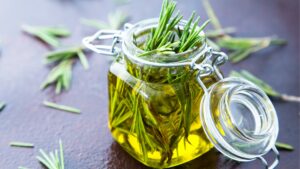
You can infuse oil with herbs to flavour salads, sauces, stews or vegetables. The basic method is to put 2 – 3 stems of clean fresh or dried herbs into a ½ litre bottle and fill it up with good olive oil. Either use one herb or a mixture of different herbs. Make sure that the herbs are covered with oil, otherwise they will become mouldy. You can also use sunflower oil but it has a shorter shelf life than olive oil and becomes rancid sooner. Let the oil infuse for about four weeks and afterwards, remove the herbs. Infused oil can be stored for 6 months up to one year.
Try out oven potatoes with rosemary oil or add thyme-infused oil to a fish steak.
Herbs in vinegar
Like oil, you can also infuse vinegar with herbs to add new flavours to your salad. Best vinegars used for infusing are wine and apple vinegar. Put 3 – 5 stems of clean fresh or dried herbs into a ½ litre bottle and fill it up with the vinegar of your choice. Again, you can either use just one herb to infuse the vinegar or an herbal mixture like herbs de Provence. Let the vinegar infuse for 4 – 6 weeks, then remove the herbs. Infused vinegar has a shelf life of up to one year.
Herb-infused vinegar and oil make great gifts!
Herbal salt
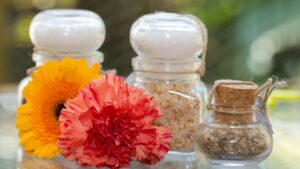
To make herbal salt, chop fresh, clean herbs into fine pieces and layer them alternatingly with salt into a glass jar. Lay the lid loosely onto the jar, don’t close it tightly. Let the mixture sit for 1 – 2 weeks and spread the salt-herb mix onto a baking tray. Dry the salt at a low temperature in the oven. When the salt has cooled down, put it into the blender and blend it until it’s homogenous. Fill the salt back into the glass jar and close the lid tightly. Stored in a dry place, the salt will last practically indefinitely.
Pesto
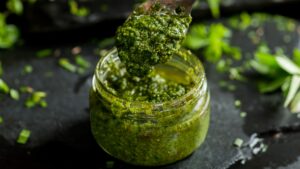
We all know the pesto “Genovese”, the famous mixture of basil, olive oil, pine nuts and parmesan that we love to add to pasta. But did you know that you can make pesto with many other herbs, too? Try out wild garlic, for example. It’ll add a wonderful taste to your dish. Or use a mixture of Italian herbs like rosemary, oregano, thyme and sage for our pesto. Even wild herbs like dandelion and goutweed can be processed into a great pesto.
For a detailed description on how to make pesto, read this article.
Unfortunately, the shelf life of pesto isn’t very long. You can store it in a closed jar in the fridge for 3 – 4 weeks. Once it has been opened, it’ll only last for 3 – 4 days. But with all the fresh herbs from spring to autumn, we can always make fresh pesto whenever we like.

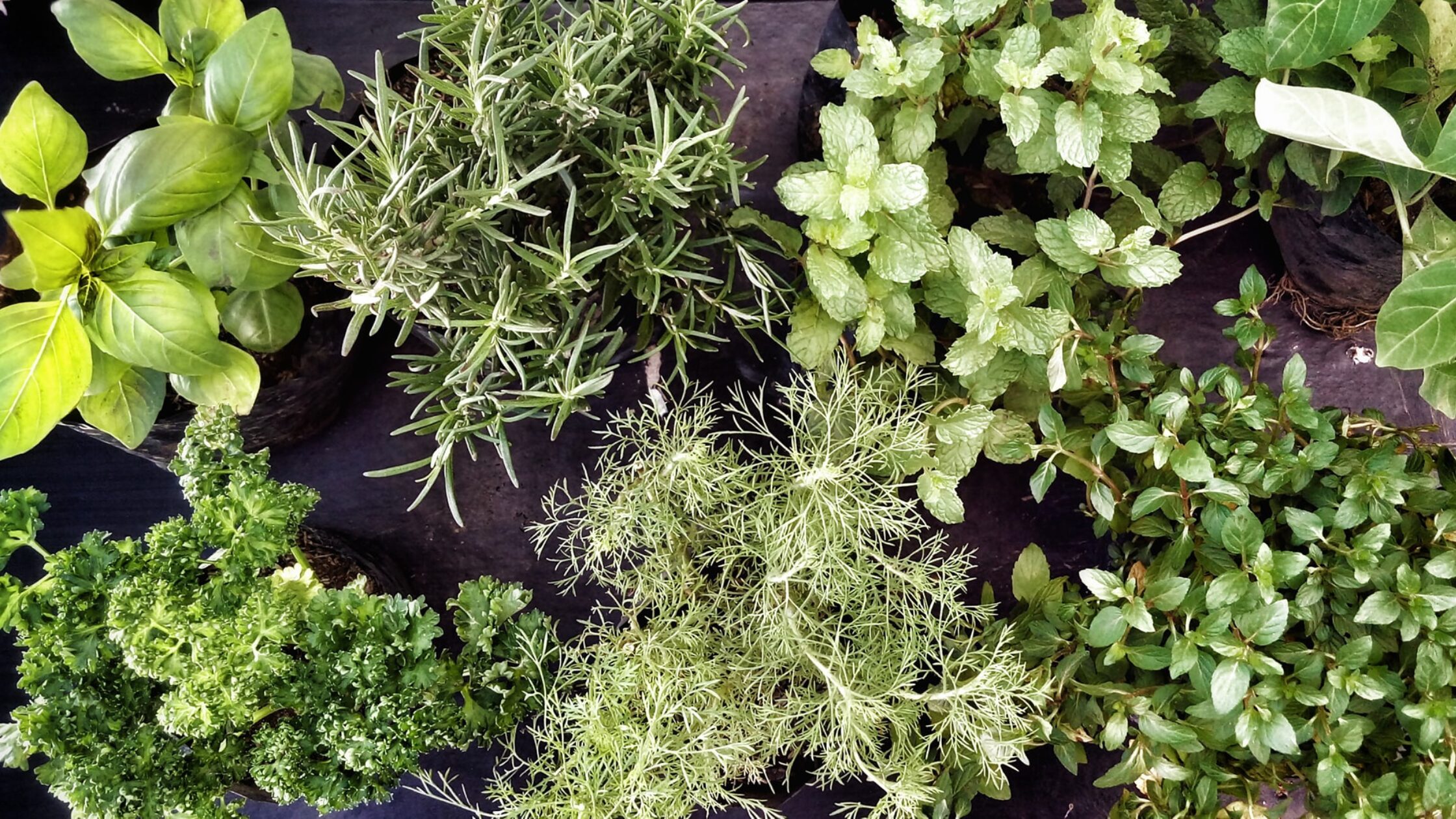
0 Comments